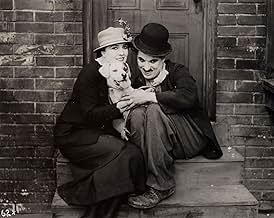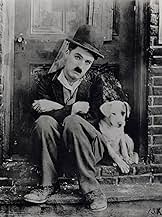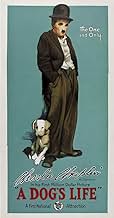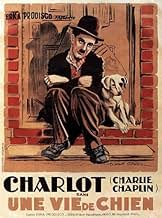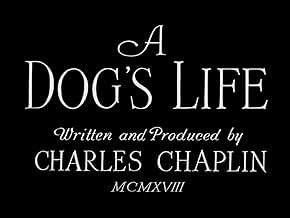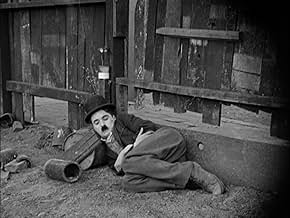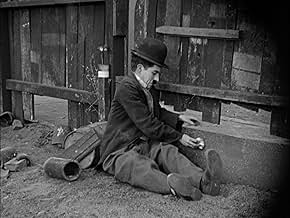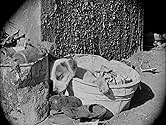The Little Tramp and his dog companion struggle to survive in the inner city.The Little Tramp and his dog companion struggle to survive in the inner city.The Little Tramp and his dog companion struggle to survive in the inner city.
Edna Purviance
- Bar Singer
- (uncredited)
Dave Anderson
- Bartender
- (uncredited)
Bert Appling
- Unemployed Man
- (uncredited)
Albert Austin
- Crook
- (uncredited)
Henry Bergman
- Fat Unemployed Man
- (uncredited)
- …
Alva D. Blake
- Man in Dance Hall
- (uncredited)
Mel Brown
- Employment Agency Clerk
- (uncredited)
- …
Minnie Chaplin
- Dance-Hall Dramatic Lady
- (uncredited)
Syd Chaplin
- Lunchwagon Owner
- (uncredited)
Dorothy Cleveland
- Woman in Dance Hall
- (uncredited)
Slim Cole
- Unemployed Man
- (uncredited)
Margaret Cullington
- Woman in Dance Hall
- (uncredited)
Billy Dill
- Man in Dance Hall
- (uncredited)
Margaret Dracup
- Woman in Dance Hall
- (uncredited)
Jack Duffy
- Man in Dance Hall
- (uncredited)
Robert Dunbar
- Old Man in Dance Hall
- (uncredited)
Ella Eckhardt
- Woman in Dance Hall
- (uncredited)
- Director
- Writer
- All cast & crew
- Production, box office & more at IMDbPro
Featured reviews
In 'A Dog's Life' our little tramp takes care of dog, the nice touch in this movie. Other things are familiar. He encounters the police, he tries to steal food from a salesman, has money problems in a bar, has some trouble with two thugs and of course he gets the girl.
The best single moment in this short is when he pretends to be one of the two thugs. With perfect timing this a perfect piece of comedy and just this part makes the movie worth watching. There are other funny moments, especially with the dog's tale. A nice short that is a little too long. The very funny final moments (including the part with the two thugs) make sure we don't think about that too much.
The best single moment in this short is when he pretends to be one of the two thugs. With perfect timing this a perfect piece of comedy and just this part makes the movie worth watching. There are other funny moments, especially with the dog's tale. A nice short that is a little too long. The very funny final moments (including the part with the two thugs) make sure we don't think about that too much.
This is an entertaining comedy with a couple of particularly amusing scenes. Chaplin is joined by several of his regular supporting players like Edna Purviance and Henry Bergman, plus Syd Chaplin, and the cast works together well. The story is funny, yet not without some substance either.
As his usual 'tramp' character, Charlie is already living "A Dog's Life" when he befriends a stray dog, and they share some adventures together. Chaplin hits a good balance in keeping himself and the dog sympathetic without overdoing the sentiment. There are some slow stretches that keep it from being even better, but the good parts make up for them and make this definitely worth watching. One particular highlight is a scene where Charlie tries to outwit two thieves - it's very cleverly done and very funny.
Anyone who likes Chaplin's comedies should enjoy this one. It has good comedy, a talented and familiar cast, and some worthwhile material - just about everything you would expect in one of Chaplin's features.
As his usual 'tramp' character, Charlie is already living "A Dog's Life" when he befriends a stray dog, and they share some adventures together. Chaplin hits a good balance in keeping himself and the dog sympathetic without overdoing the sentiment. There are some slow stretches that keep it from being even better, but the good parts make up for them and make this definitely worth watching. One particular highlight is a scene where Charlie tries to outwit two thieves - it's very cleverly done and very funny.
Anyone who likes Chaplin's comedies should enjoy this one. It has good comedy, a talented and familiar cast, and some worthwhile material - just about everything you would expect in one of Chaplin's features.
This was Charlie Chaplin's first film for First National, and with his pictures there, he could create movies of longer, or varied, length, rather than the two-reelers he was obliged to churn out before. His Mutual shorts were a vast improvement over his previous work, but watching them I'd sometimes get the sense that his ideas required more time to elaborate, to fully realize, or unfold. The hilarity of the gags in "A Dog's Life" result from this newly acquired freedom to expand his films.
I don't think it's one of Chaplin's most important works, or one of his best, but "A Dog's Life" is very funny and left me in high spirits. The crying set piece was hilarious. As well, Chaplin continued to use props and settings to his comedic advantage, such as with the missing boards and the door of his fenced home when he eludes a policeman in the beginning of the film.
Perhaps, the most interesting aspect of this one is the elaborate pantomime that goes on. The creation of the world within a silent film often created problems for lesser filmmakers on what the role of sound is within that world. There is obviously sound in the world of "A Dog's Life", but the tramp continually ignores it and oft prefers to use pantomime to express himself--or others, as in the elaborate scene using his hands. This demonstrated a lot of thought on Chaplin's part, and it's something that could be done only in the silent era. For all the comic genius in America at the time, the fact that the clowns couldn't talk shouldn't be overlooked, for it was full of advantages.
I don't think it's one of Chaplin's most important works, or one of his best, but "A Dog's Life" is very funny and left me in high spirits. The crying set piece was hilarious. As well, Chaplin continued to use props and settings to his comedic advantage, such as with the missing boards and the door of his fenced home when he eludes a policeman in the beginning of the film.
Perhaps, the most interesting aspect of this one is the elaborate pantomime that goes on. The creation of the world within a silent film often created problems for lesser filmmakers on what the role of sound is within that world. There is obviously sound in the world of "A Dog's Life", but the tramp continually ignores it and oft prefers to use pantomime to express himself--or others, as in the elaborate scene using his hands. This demonstrated a lot of thought on Chaplin's part, and it's something that could be done only in the silent era. For all the comic genius in America at the time, the fact that the clowns couldn't talk shouldn't be overlooked, for it was full of advantages.
Let's face it : Chaplin's short films, before 1917, are not so good and funny anymore. After 1917, and waiting to make longer films, there are three films I'm really found of : The Imigrant, Shoulder Arms and A Dog's Life. I love A Dog's Life because Chaplin was never trampier than in this film. He's poor, miserable, probably dirty! He really looks like a real tramp! So is his dog! The dog is simply wonderful in this film!
Funny gags all the way. I'm mad about a scene in the café, when Edna Purviance sings a very sad song and makes everybody's crying. In my version, on video, they put some strange music while she sings, like a saw sound. It's a very funny sounds effect for the image of miss Purviance! The story is very sample and warm. This is Chaplin's shorts at his best!
Funny gags all the way. I'm mad about a scene in the café, when Edna Purviance sings a very sad song and makes everybody's crying. In my version, on video, they put some strange music while she sings, like a saw sound. It's a very funny sounds effect for the image of miss Purviance! The story is very sample and warm. This is Chaplin's shorts at his best!
A Dog's Life has more layers than the usual Chaplin films, taking the character slightly more literally than he usually does. The overall appeal of Chaplin's Little Fellow is that he is such an everyman that he can be thrust into an almost endless multitude of situations, and Chaplin uses his limitless talent to mold it into brilliant, humanitarian farce. In this film, the little tramp is more of a homeless fellow than usual (I think he's usually just poor and struggling), and in the process he be-friends another homeless and struggling tramp.
There are some great scenes in the film, although even at only 40 minutes it is a bit too long for the material to support. One scene in particular, where Charlie knocks a bully unconscious, is going to be the most memorable one in the movie, along with a scene where he outsmarts some police officers. There is a charming romance that is neither cloying nor overly involving, just the right amount for a short, light-hearted comedy. This probably would have worked even better as a two reel film, but as it is it stands as one of Chaplin's better three reelers.
There are some great scenes in the film, although even at only 40 minutes it is a bit too long for the material to support. One scene in particular, where Charlie knocks a bully unconscious, is going to be the most memorable one in the movie, along with a scene where he outsmarts some police officers. There is a charming romance that is neither cloying nor overly involving, just the right amount for a short, light-hearted comedy. This probably would have worked even better as a two reel film, but as it is it stands as one of Chaplin's better three reelers.
Did you know
- TriviaThis was Charles Chaplin's first film for First National Pictures under a $1M contract where Chaplin had full creative control over his films for the first time.
- GoofsDuring the fight at the lunch cart, one of the props holding up the awning gets knocked away. In subsequent shots, the prop is back in place.
- Quotes
Title Card: When dreams come true.
- ConnectionsEdited into The Chaplin Revue (1959)
Details
- Release date
- Country of origin
- Official sites
- Languages
- Also known as
- A Dog's Life
- Filming locations
- Production company
- See more company credits at IMDbPro
- Runtime33 minutes
- Color
- Sound mix
- Aspect ratio
- 1.33 : 1
Contribute to this page
Suggest an edit or add missing content


